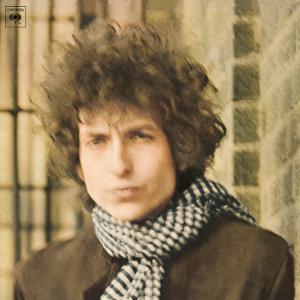
Blonde on Blonde (1966)

1. Rainy Day Women #12 & 35
2. Pledging My Time
3. Visions of Johanna
4. One of Us Must Know (Sooner or Later)
5. I Want You
6. Stuck inside of Mobile with the Memphis
Blues Again
7. Leopard-Skin Pill-Box Ha
8. Just Like a Woman
9. Most Likely You Go Your Way
(And I'll Go Mine)
10.Temporary Like achilles
11.Absolutely Sweet Marie
12.4th Time Around
13.Obviously 5 Believers
14.Sad Eyed Lady of the Lowlands
With Blonde on Blonde, Dylan reached the terminus of what might be termed his “electric trilogy”—a final act of incandescent clarity following the bracing invention of Bringing It All Back Home and the prophetic authority of Highway 61 Revisited. Released in mid-1966, the album stands not merely as the conclusion of an extraordinary period, but as its peak. It was, by any standard of the time, a monumental gesture: a double LP of original material at a moment when even single albums struggled to sustain cohesion. That Blonde on Blonde not only justifies its length but remains startlingly unified is perhaps its most remarkable feat.
The record opens with Rainy Day Women #12 & 35—a chaotic, brass-laden stomp that is part Dixieland farce, part countercultural call to arms. Its refrain, “Everybody must get stoned,” was either a cheeky nod to the times or a metaphor for societal persecution—or, more likely, both. That such a peculiar, ramshackle number could serve as the album’s opening salvo says much about Dylan’s confidence and creative audacity in this period.
From there, the album tightens its focus while retaining its tonal variety. There is a distinct sonic personality across the tracks—a dusky, blues-inflected atmosphere underpinned by Dylan’s harmonica and the tight, intuitive playing of his backing band, The Hawks (soon to be known as The Band). The result is a sound both era-specific and curiously immune to decay. While the album can loosely be associated with the psychedelic movement of the mid-’60s, it avoids the genre’s self-indulgent excesses. Dylan remains, as ever, idiosyncratically apart.
Tracks such as I Want You and Just Like a Woman marry lyrical intimacy with pop clarity, offering hooks as immediate as anything in Dylan’s catalogue. Elsewhere, more labyrinthine compositions like Stuck Inside of Mobile with the Memphis Blues Again or the surrealist Leopard-Skin Pill-Box Hat showcase his linguistic dexterity and appetite for absurdity. It is here, perhaps more than anywhere else in his discography, that Dylan achieves his long-sought “thin wild mercury sound”—a phrase he once used to describe the aesthetic ideal behind the album.
The closing track, Sad Eyed Lady of the Lowlands, occupies an entire LP side. At over eleven minutes, its length tests patience but rewards immersion. A slow, hymn-like meditation, its lilt and repetition suggest a kind of trance state—part love song, part elegy. That Dylan chose to end such an ambitious record with something so personal and unresolved speaks to the album’s conceptual integrity. It is not merely a sequence of great songs but a sustained emotional and aesthetic arc.
Blonde on Blonde is, for many, the apogee of Dylan’s career—a sprawling, vivid, and uncannily balanced work that captures both the spirit of its era and something far more permanent. In embracing the full scale of the LP format, Dylan delivered what might be the first truly great double album in rock history. It remains, decades on, not just a high-water mark in his catalogue, but one of the towering achievements of modern popular music.
Go back to the main page
Go To Next Review